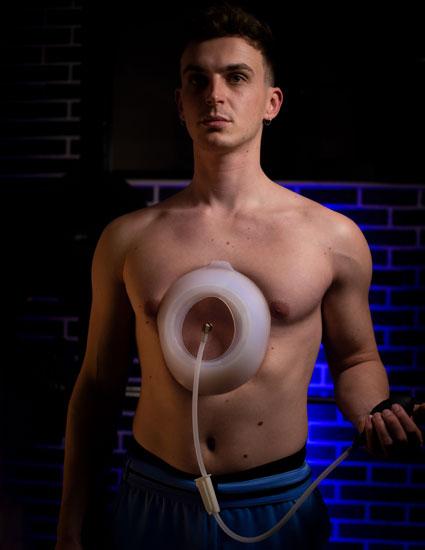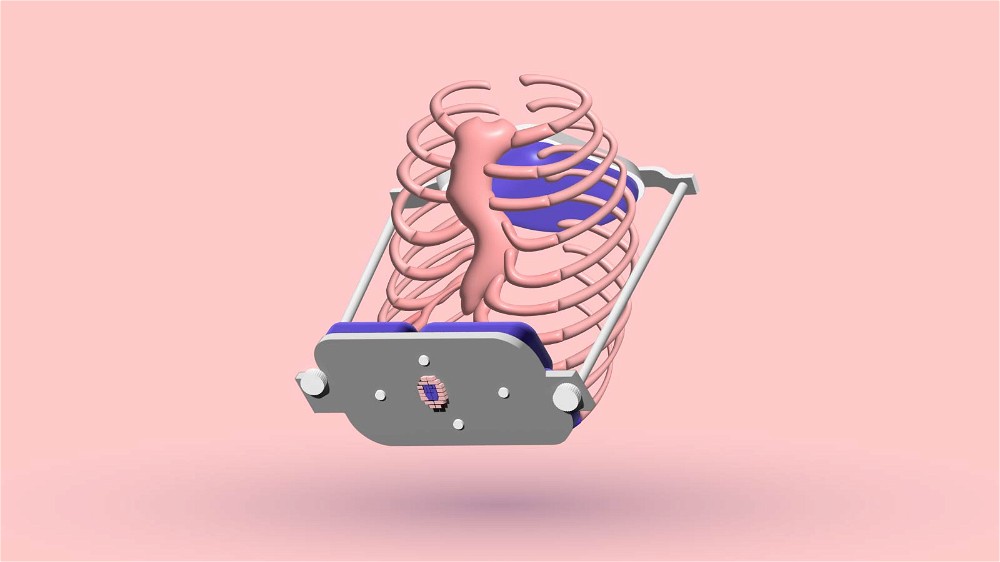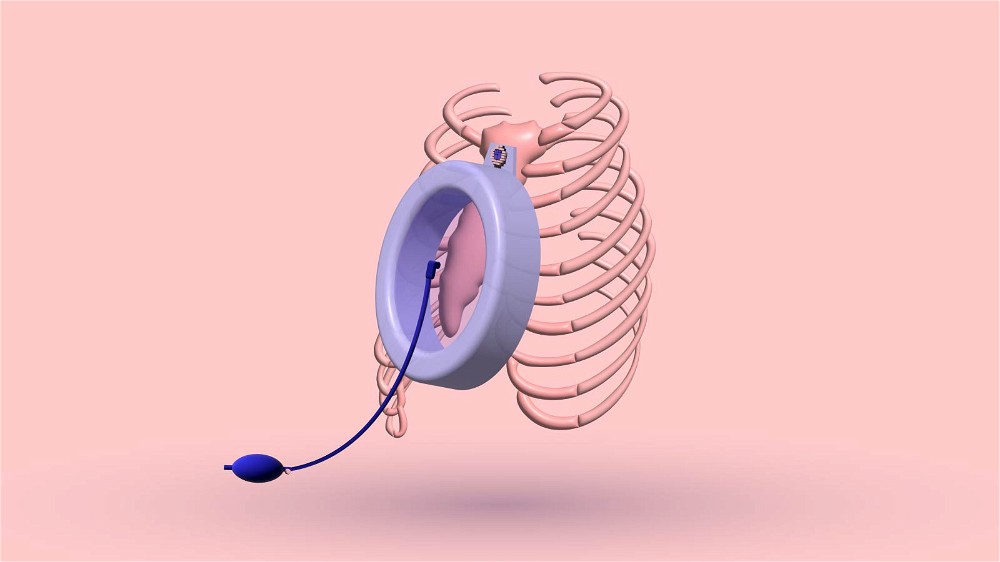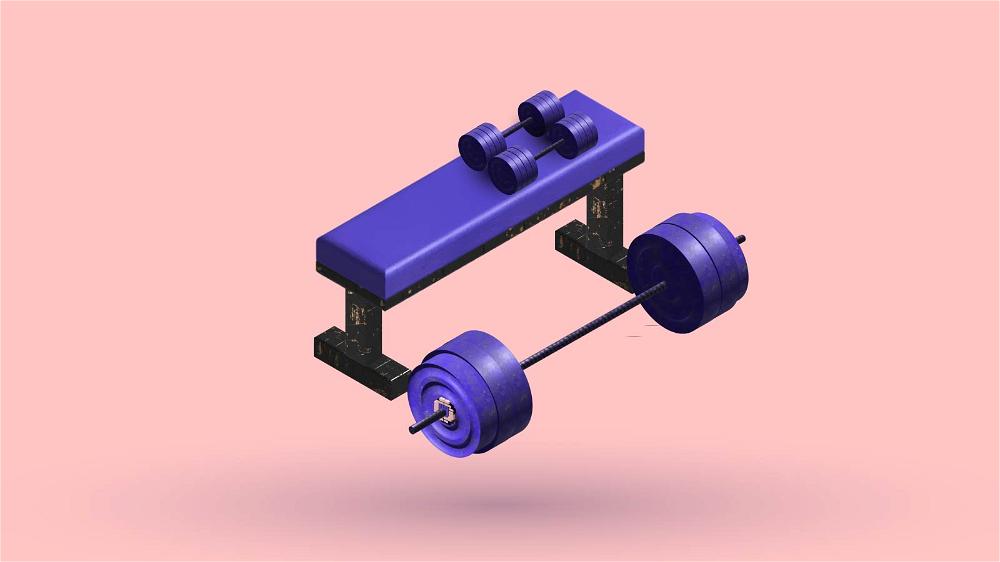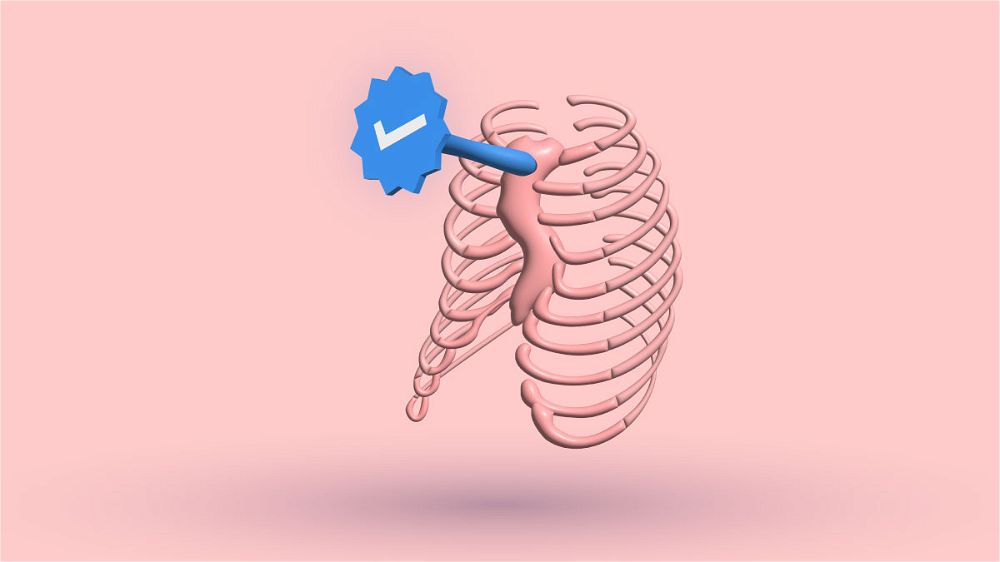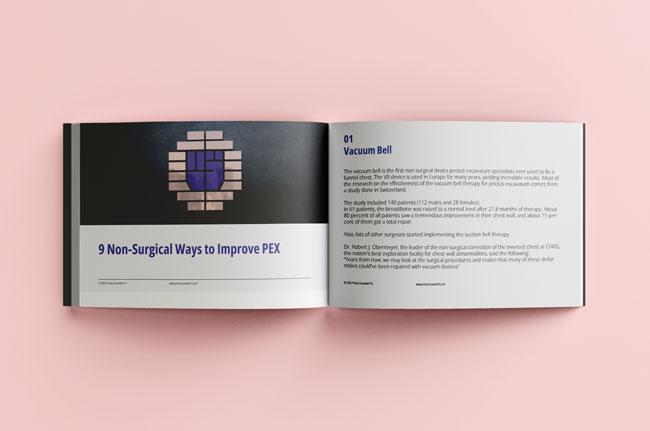The pectus excavatum deformity is also present in cats. You can see the indentation typically within a few days after birth.
At the time of this writing, there is still a lack of data to determine the racial or sexual inclination of pectus excavatum deformity in kittens. Also, it can occur in dogs.
Between the two, the deformity is more dominant in cats. Besides felines and dogs, the concave chest abnormality can also target humans, primates, lemurs, and nutria.
It results in ventral to dorsal narrowing of the whole chest or dent in the sternum.
8 Most Common Symptoms of Pectus Excavatum in Cats

If you notice your cat having a few of these symptoms, make sure to check whether its chest is indented. You will make an easy diagnosis just by doing that simple observation.
If chest depression is confirmed and a few of these symptoms occur daily, make sure you visit the veterinary center. Any delay can be fatal to your cat's health.
List of Symptoms
- Shortness of breathing
- Difficulty performing regular physical movements like jumping or running
- Loud breathing
- Recurrent pulmonary illnesses
- Unnatural loss of weight
- Frequent and loud coughing
- Regular vomiting
- Weak desire to eat and difficulty with gaining weight
What Causes Pectus Excavatum in Cats?

The exact cause of pectus excavatum in kittens is still unknown. Just like humans, cats also have a heritable inclination for deformity.
Because of this, castration is suggested for cats with pectus excavatum. Several cat breeds are more prone to the sunken chest than others.
Siamese, Burmese, Bengal, Munchkin, and related breeds are most susceptible to deformity. However, it can happen to almost any breed.
The Funnel Chest Deformity in Cats Can Be Life-Threatening

Pectus excavatum in kitties isn't just an aesthetic problem. The deformity can cause problems in the cat's cardiac and pulmonary functioning.
In veterinary medicine, little is known about rare diseases like pectoralis excavatum in animals. Recently, this unknown world of rare diseases sparked the interest of scientists.
They are increasingly diagnosing such diseases and doing a lot of research on them. Typically, most cats affected by the condition have a lower lifespan than healthy cats.
However, there are effective surgical correction techniques that will fix their deformity. Most cats affected usually indicate breathing warning signs.
Such is trouble breathing after an inconsiderable physical activity like jumping or running. You can identify these respiratory symptoms not long after birth.
However, most owners aren't aware that pectus excavatum can affect their cats. They can visually acknowledge the malformation in their kitties by looking at their sunken sternum.
To identify the deformity, you can check whether the chest's midpoint is flat or visibly hollow. In healthy cats, it should be a little curved.
That's the most visible indicator of pectus excavatum.
Pectus Excavatum Treatment

You may ask yourself, what is the best way to repair the pectus excavatum deformity in your cute kitty, so it doesn't suffer anymore? In newborn pets, the costal cartilages and the breastbone are very adaptable.
Vets can easily modify the chest wall by applying external pressure to the sternum. The best way to do that is by undergoing a surgical procedure.
A 2008 study revealed that an external splinting technique is the best type of surgery for cats suffering from the funnel chest. I will talk about it in detail in the text that follows.
This procedure has given the best outcomes out of all surgical techniques. This is backed up by science. It is the procedure of choice to correct the pectus excavatum condition in young kitties no older than four months.
Pectus Excavatum Cat Surgery

In most instances, the ideal pectus excavatum treatment for cats is surgery. Surgery for cats isn't a part of the daily activity in the veterinary clinic.
Most veterinary doctors don't have a lot of experience performing this surgery. As veterinarians say, funnel chest abnormality in kittens is rare, and the surgery is complicated, dangerous, and costly.
This surgery does not look too complicated initially, but it is very life-threatening. It can't be stated whether the kitty will survive the surgery, recover completely, or get better.
Sadly, most owners of cats with this diagnosis prefer their cats to suffer and die early than to pay for the surgery. That may sound harsh, but that is the reality in which we live.
Most cat owners aren't willing to spend $100 on cat insurance. They consider this a lot of money to spend on an animal.
It isn't shocking that money isn't "thrown" on an expensive kitty chest correction surgery. There are three different types of pectus excavatum surgeries for cats.
External Splinting

You can do this type of operation in kitties younger than four months. For this to be successful, the sternebrae need to be still flexible.
The brace used in the surgery is made of an elastic material. It greatly reminds me of a human pectus excavatum brace.
It is U-shaped, so it fits perfectly around the ventral thorax while extending three-quarters of the path to the backbone. Surgical scrub sponges are used to lessen tension wounds on the sides of the brace.
After surgery, the brace is still in the cat's chest wall for more than a few weeks. It must stay in position until the breastbone is satisfactorily rigid to avoid internal dislocation.
Potential Complications of External Splinting
- Potential hazards include accidental lung or heart puncture.
- Collapsed lung (pneumothorax).
- Re-expansion pulmonary edema. This complication can be fatal for your cat and requires an immediate medicinal emergency.
- An infection linked with the stitchings.
- The brace can also cause severe moist dermatitis, also known as a hot spot. That is a localized, wet, red bacterial disease to the skin. The feline body's answer is to itch, which irritates the skin and worsens the itchiness. This generates a never-ending cycle of itching, scraping, and grinding on your indoor furniture.
- Tunneling wounds, also known as sinus tracts, can emerge throughout the stitchings. The most common cause of this is an infection of the underlying tissues.
- Malformation recurrence can happen despite surgery success. This can be very demotivating for both you and your feline friend. The human sternum is also prone to falling back to flared position after a Nuss procedure. There is a lot of scientific evidence that backs this up.
- Re-expansion pulmonary edema. This complication can be fatal for your cat and requires an immediate medicinal emergency.
Also, while the brace is in position, felines must be restricted from any severe bodily action. You must also separate them from other kitties because the brace can be easily dislocated leading to deadly heart punctures.
Also, you must stop the kitty from pushing or scraping at the brace. Any time you see your cat do that to itself, make sure you interrupt it.
The veterinarian will tell you to make weekly checkups. That's arranged to ensure the brace isn't loosened and ensure the stitch section isn't infected.
Radiography is arranged every two weeks to ensure the dent in the cat's chest is decreased. The brace remains in the cat's chest for around four to eight weeks. The period depends on age.
After brace removal, the cat's chest must remain in the corrected position permanently. Some kittens who underwent an External Splinting operation don't have an aesthetically repaired pectus excavatum condition.
However, medical data proves that health hazards like exercise intolerance, shortness of breath, and heart compression are reduced after surgery. The brace prevented the pectus excavatum deformity from progressing while the cats grew during the eight weeks.
Internal Splinting

In some cases, internal splinting provides fewer complications and better repair than external splints.
Below, you can see how the surgical procedure is completed:
- For the internal splinting surgery technique, a veterinary plate that is easy to cut or an aluminum brace bar is used. The primary purpose of this technique is to readjust an abnormal breastbone. Typically, a central ventral operational strategy for the breastbone is used.
- The sternebrae are separated from the exterior, deep pectoralis, and rectus thoracic muscle likings. That is done with an elevation of the periosteum (a thick coating of vascular connective tissue covering the bones).
- To close the skin, monofilament stitches go under the sternebrae and ribs. Then, they go within the holes on the uniquely formed T-shaped plate. After that, the sutures are conclusively knotted securely.
Longitudinal Sternebral Pinning with External Splinting

The longitudinal sternebral pinning combined with the external splinting technique utilizes a flexible brace material and a Kirschner bar. This causes a realignment of the concave sternum in the kitten.
The surgeon embeds the Kirschner bar into the sunken breastbone, from the manubrium to the fourth sternebrae. Anesthetic is given to the cat during the operational procedure for repairing Pectus Excavatum.
Also, the intensity of the chest examination and the X-ray can cost the cat its life. Most commonly, veterinarians opt for mask anesthesia.
In most cases, intubation is not possible with baby cats, and injection anesthesia is very dangerous. The mask anesthesia gives cats the needed anesthetic and oxygen that cats urgently need during the operation.
Below, you can see how this technique is performed.
- After the cat is stable and sleeps peacefully, X-rays are first applied.
- Then the cat is entirely shaved at the surgery area in the chest.
- Then, a custom splint made of plastic is adapted to the cat's body. The brace is very well-padded on the sides. The brace is curved like a typical cat chest wall should look.
- Then, a custom splint made of plastic is adapted to the cat's body. The brace is very well-padded on the sides. The brace is curved like a typical cat chest wall should look.
- In the area where the sternum is positioned, holes are drilled in the splint. This is the exact time point when complex tasks start.
- A needle must be injected into the right side of the breastbone, going under it, and out again on the left side of the sternum. That is usually done with four strings.
- When the strings are under the sunken sternum, the veterinary surgeons pull them up to raise the chest. Unluckily, the surgery requires the doctor to apply significant pressure on the chest while piercing. This is when most of the deaths occur. If your cat persists through these moments, the chances of success and survival are high. Most cats will have breathing difficulties during this period. They usually have breathing interruptions, which are very scary. That's mainly because of the animal's age and the respiratory system's pain.
Pectus Excavatum Cat Surgery Cost
The average cost of pectus excavatum cat surgery is $800. It usually ranges from $150 up to $2500. It mainly depends on the deformity severity, the cat's age, and the expertise and experience of the veterinary surgeon.
If you're financially stable, there is no reason why you wouldn't pay for your lovely kitty to undergo surgery. It will improve its quality of life and live happily for the rest of its life.
I believe the love and affection your feline will bring to your household are priceless. You probably don't want to watch it sad and depressed with the deep depression in its chest.
The external splinting surgery is cheaper than the Nuss procedure for humans, which costs up to $100,000.
Pectus Excavatum Cat Life Expectancy

The pectus excavatum abnormality in kittens can be life-threatening in critical cases. When the cat grows and its organs expand, the lungs and heart won't have enough space to expand.
That will hinder the development of these organs, causing plenty of problems. In milder cases, there may not be direct life endangerment.
However, the cat's life expectancy is significantly lowered if left untreated. Fortunately, some felines affected with a mild deformity can grow out of the abnormality on their own.
If the severity is slight, your cat can live for a long time. Sadly, there isn't much information on the internet about the dangers of pectus excavatum in kittens.
Furthermore, not much information about cats' sunken chest wall operations is published. I am an owner of a lovely Exotic Shorthair cat called Garfield. It is sad to see how fellow cat owners choose to abandon their kitties suffering from pectus excavatum.
They'll miss a lot of love, affection, and harmony in their household.

Cat Story
A gentleman living near Arzachena in Italy had many kitties he took care of. He added Martilla and Bianca to the big feline family.
Because the two felines were still very young, he decided not to spay them. After a year, Martilla gave birth to six beautiful babies. Likewise, Beeda gave birth to four kitties. Because the gentleman's feline family expanded to 26 cats, he asked a friend of mine for help.
My Friend's Amazing Gesture
My friend kindly accepted his offer to take care of the ten newborn kitties and their two mothers. He took the mothers too so they could raise their tiny ones in healthy and secure surroundings. The two mothers watched after their babies together.
Melii, Martina, Meriva, Maxi, Mezzy, and Mally (the six newborns of Martilla), as well as Brianna, Brielle, Brooklynn, and Briana (the children of Bianca), had a lot of joy together.
The tiny kitties and their mothers traveled to my friend's foster home in Germany. Every single kitty was very comfortable and happy. However, an exception was the little Melii.
Melii Was Suffering From Pectus Excavatum
My friend's wife recognized that the baby cat had severe breathing difficulties. They immediately went to the veterinary clinic, and the vet diagnosed a "heart defect. "Shortly after the analysis, the doctor did some X-rays on the cat's chest.
The results were strange. The breathing symptoms and the X-ray results were not typical for a regular heart problem. The doctor was skeptical about the diagnosis and did not find it conclusive.
After that, my friends picked Melii and took her to the veterinary clinic in Munich. That's where the most severe deformities are treated and operated on by the best and most experienced surgeons.
The right, but the terrifying diagnosis was made in the veterinary hospital. Melii was born with a condition of the chest wall called pectus excavatum.
The condition caused deformity to the breastbone, forcing the big blood vessels around the heart toward the inside. Because of that, every time Melii played with its brothers and sisters, it got out of breath immediately.
The Surgery That Saved Melii's Life

However, my friends wanted to save Melii so that she would have a healthy life, just like her siblings. The veterinarians consulted with each other on how to continue.
Ultimately, the plans were put into real life. Pulling the sunken sternum back into a standing position requires a brace made of cast material. It had to be custom adjusted to the thorax of the tiny kitty.
Then, the custom brace was attached to the sunken chest of the cat in a complicated surgery utilizing sutures. The small Melii carried the brace for about four weeks.
That's how long the inside-bent breastbone needed to be stabilized and straightened. Milli took the surgery and carried the splint like a champion.
She was abundant with joy, even with the brace. Postsurgically, she jumped and played with the other kitties happily, just like any other kitten her age.
In the veterinary clinic, she had a lot of fun with the adorable toy mouse. Melii was allowed to move and play with other kitties after the brace removal.
After four weeks, she finally left the animal clinic in Munich, back to her warm and comfy foster home. Up to this point, the indented chest surgery seems to have produced the wanted success.

A Story With a Happy Ending
Milli can now play and run free without any breathing struggles. She is now playing around with her nine other young siblings without care.
I, a former pectus excavatum sufferer, who managed to fix the deformity non-surgically, am thrilled that young Milli is doing so great now. I hope she will enjoy a lasting, peaceful, and happy cat life.
Is Pectus Excavatum in Cats the Same as Flat Chest Syndrome?

It is shocking (and concerning) how many veterinary doctors cannot diagnose flat-chested kitten syndrome. Some vets don't know anything about it, even though it is widespread and moderately popular in the cat owner society.
Many kitties who suffer from flat-chested syndromes are wrongly diagnosed with pectus excavatum. This can be very hazardous for the cat's health.
Flat-chested kitten syndrome is a deformity in cats in which they form a compression of the breast caused by lung collapse. This is a soft-tissue problem that's not caused by a bone abnormality, like pectus excavatum.
The problem occurs when the veterinarian doesn't see a thoracic or spinal abnormality. If this happens, and you aren't sure about the vet's knowledge, please take documents of the Flat-chested kitten syndrome research to them.
Inform the veterinarian about the syndrome, and make sure they make a detailed analysis of your cat's chest. Ensure that the study documents you bring are enough to help the doctor make the correct diagnosis.
This can be the difference between life and death. Pay special attention to the segment about diagnosing and recognizing flat-chested kitty syndrome.
Nevertheless, lung collapse can sometimes be a secondary sign created by a structural malformation concerning the thorax, such as pectus excavatum. In light cases of the syndrome, the bottom of the breastbone becomes flattened.
Comparatively, in severe cases, the entire chest can flatten. It can be characterized as a kitten that has been walked on. In just a matter of 2 hours, the cat can go from ordinary to completely flat. After just a couple of hours, it will usually stabilize again.
Conclusion
Cats with severe concave chest deformity are expected to live less than average cats. Not only that, but their quality of life will be poor. Every time the kitty plays with its fellow feline friends, it will get out of breath quickly.
That's a sorrowful sight to see. Luckily, there is a surgical way to correct this once and for all.
The best method is the external splinting method I discussed in detail above. Unfortunately, the pectus excavatum danger awareness isn't raised to an optimal level.
Most cat owners aren't aware that the deformity causes shortness of breath and quick loss of stamina. They only think that the cat's cardiovascular fitness isn't developed as well as in other kittens.
What's worse is that these owners aren't willing to pay a few hundred dollars to save their little kitty's life. They choose the death of their pet friend rather than a surgical procedure.
If your cat suffers from funnel chest deformity, please don't hesitate. Every single second of delay can be deadly.
Also, ensure that your cat isn't suffering from Flat-chested kitty syndrome. Please bring your cat to an experienced veterinarian that knows the difference between pectus excavatum and flat-chest syndrome.
Even though the symptoms may be similar, the consequences can differ significantly. With flat-chested syndrome, your kitty can die in hours.
And, there you have it. I hope I have covered everything you need to know about this unpleasant condition that can strike animals, especially cats.
5 Sources
- Flat-chested kitten syndrome. In: Wikipedia [Internet]. 2022 [cited 2022 Dec 4]. Available from: https://en.wikipedia.org/w/index.php?title=Flat-chested_kitten_syndrome&oldid=1118577016
- Neutering your cat | International Cat Care [Internet]. [cited 2022 Dec 4]. Available from: https://icatcare.org/advice/neutering-your-cat/
- Fossum TW, Boudrieau RJ, Hobson HP. Pectus excavatum in eight dogs and six cats. Journal of the American Animal Hospital Association. 1989;25(5):595–605.
- McAnulty JF, Harvey CE. Repair of pectus excavatum by percutaneous suturing and temporary external coaptation in a kitten. J Am Vet Med Assoc. 1989 Apr 15;194(8):1065–7.
- Yoon HY, Mann FA, Jeong S wuk. Surgical correction of pectus excavatum in two cats. J Vet Sci. 2008 Sep;9(3):335–7.




